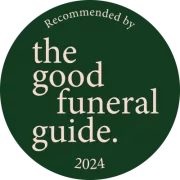What is embalming?
If you have ever had to organise a funeral, you may have heard of the term embalming, or perhaps you’ve heard it referred to as ‘hygienic treatment’. In this article, we will explore the history of embalming, why it isn’t necessary for everyone who has died and why you should be given information to make a fully informed choice.

What is embalming?
Embalming was historically used during the Civil War to preserve the bodies of fallen soldiers before transporting them back home; the ancient Egyptians also used a form of embalming known as mumification.
Embalming involves injecting chemicals into the body, to slow down the natural decomposition process. The process typically uses a mixture of formaldehyde, water and other chemicals to replace bodily fluids. This mixture is inserted into the arteries and dispersed via the circulatory system. Embalming also involves the setting or arranging of facial features to create a more lifelike and peaceful look.
Is embalming necessary?
There are some occasions where embalming is required, which include:
- Being repatriated abroad;
- Preservation reasons, particularly where there will be a significant delay between the time of death and the funeral service; or
- Presentation purposes, to try to restore a more natural appearance for the person that has died.
Anyone looking to have a woodland or natural burial would not be allowed to be embalmed beforehand due to environmental concerns.
Some funeral homes may use the term 'hygienic treatment' for embalming, presenting it as a necessary step for cleanliness and hygiene. Embalming is not a universal requirement, and the use of such terminology has sparked controversy, as some argue that it may mislead families, often incurring unnecessary cost.
Embalming is not required where the funeral director has cold storage facilities. In this environment, someone’s body will most often not begin the process of natural decomposition for up to 2-3 weeks.
At Tom Owen and Son, we prefer a less invasive approach; gentle washing of the body and hair of the person that has died, followed by treating the skin with a blend of essential oils.
Can I opt out of embalming my relative?
You should always be given a choice about embalming and whether you wish for it to go ahead. In addition, best practice is that you should be asked to sign a consent form if you do opt for this method.
Embalming is an additional cost that you have a right to make an informed decision on.







